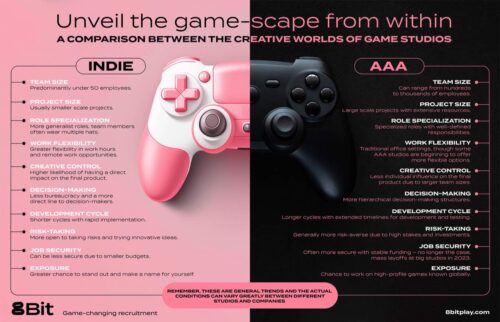
Building Feedback Culture in Your Company
See similar blog posts

Building a feedback culture in a fast-paced business environment—where creativity and innovation are prioritized—is challenging but essential. We’ll use the games industry as our main example, though all the tips will be universally applicable. To create a game, constant collaboration and communication within the team are necessary, with ongoing feedback playing a crucial role. When we refer to that, we’re not just talking about feedback on the game itself but also about employee feedback that can boost performance and innovation.
Why is building feedback culture important?
In game studios, employees of all specializations—artists, designers, programmers, producers, and others—need to work closely together to bring complex ideas to life. Constructive and open feedback helps them refine ideas, overcome challenges, and enhance creativity. When feedback becomes a routine part of an organization’s culture, it also boosts collaboration across teams.
Feedback is also key for helping team members grow professionally, or even personally. It strengthens skills, builds confidence, fosters a stronger connection to the company culture, and lets individuals see how their work contributes to the studio’s overall success.
Examples of successful feedback systems
In the games industry, several studios have adopted feedback systems that make a real difference in their performance and collaboration. Two of them shared their success stories:
1. Ubisoft regularly uses peer and cross-team reviews as part of their feedback process. These practices allow teams to stay aligned and adjust their perspectives as they move into the next project stage.
2. Insomniac Games has a combined structure of real-time feedback with formal performance reviews, helping their creative and technical teams communicate better and make faster, more informed decisions.
To build effective teams, organizations need a feedback system that fosters a collaborative and innovative environment. It’s essential to be present in your team members’ lives, creating an atmosphere of trust and respect where any topic can be addressed. By combining structured and real-time feedback methods, companies can establish a space where team members feel comfortable, empowered, and supported—ultimately leading to a better and more innovative gaming experience.
Collecting and delivering feedback
For feedback to make an impact, it’s essential to keep it constructive and actionable. Here are some effective ways to gather and share feedback:
Regular one-on-one meetings:
Scheduled 1:1s between managers or leads and their team members are key for building trust and fostering closer relationships.
You can call these meetings different things—”weekly/monthly meeting,” “update,” or “catch-up”—but the purpose remains the same: a regular conversation with each team member. Experiment with frequency and duration (e.g., 30-60 minutes every week, bi-weekly, or monthly) to find what works best with each person. It’s important to lead by example: consistently arriving late or canceling 1:1s may signal to your team that other matters take priority, sending a negative message. If you need to reschedule, make an effort to rearrange as soon as possible.
360-degree feedback:
This method collects input from all directions—peers, subordinates, and supervisors—giving team members a full view of their performance. In game development studios, where cross-departmental collaboration is constant, 360-degree feedback can reveal how well everyone is working together toward common goals.
Anonymous Surveys:
Despite efforts to create a positive work culture, some team members may not feel comfortable sharing openly. Anonymous surveys provide a safe space for raising concerns and can help uncover larger issues that might not surface in 1:1 discussions.
Project retrospectives/post-mortem project analysis:
After a project stage or milestone, teams can gather for a retrospective to discuss what went well, what didn’t, and what could be improved. These sessions provide valuable opportunities for team-wide reflection and self-improvement.
Real-time feedback tools:
Some companies foster a culture of real-time feedback through platforms like Google Forms/Typeform, Slack, or Teams. This allows feedback to remain fresh and relevant. This way it can be addressed immediately rather than waiting for a formal review.
Each of these methods can help build a more responsive, collaborative, and growth-oriented team environment.